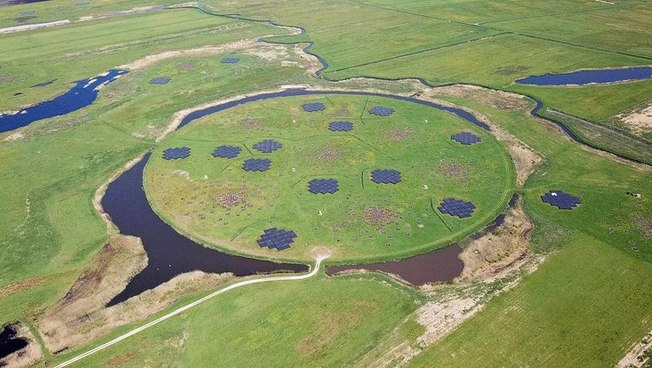22 January 2024
European Commission decides on carrier system for LOFAR radio telescopeCutting-Edge Observation and Data Processing Systems for Astronomy

Photo: Private
Ten years ago, the LOFAR radio telescope went into operation. Today, it is a Pan-European project spanning 52 antenna stations in 8 countries. The collaborative project brought on fundamental developments in low frequency radio astronomy with hundreds of academic publications. Due to its Pan-European significance, the European Commission decided to convert the hitherto Netherlands foundation LOFAR into an independent legal entity now. European Research Infrastructure Consortium, ERIC. LOFAR ERIC was officially founded on 22 January 2024.
Federal Republic of Germany among the founding members
Six EU countries had applied to the European Commission to set up LOFAR ERIC, thus becoming its founding members: Bulgaria, Germany, Ireland, Italy, the Netherlands, and Poland. The new research organization is cooperating with institutions in France, Latvia, Sweden, and the United Kingdom.
LOFAR ERIC aims to upgrade the infrastructure all across Europe and provide astronomy with state-of-the-art observation and data processing systems. Already, the telescope offers an enormous view of the sky, unparalleled sensitivity and resolution, and novel opportunities for simultaneous fully digital, multidirectional observations without moving parts.
Insights into the early Universe and space weather
The new LOFAR carrier facility is to enable researchers to conduct extensive innovative investigations. This includes research into the dawn of the Universe, the creation and development of galaxies, galaxy clusters, and black holes. Further research explores the nature of ultrahigh energy cosmic rays, conditions in interstellar space, and cosmic magnetic field structures. The radio telescope helps provide unique scientific knowledge on important societal issues, ranging from ionospheric disturbances to space weather.
Half a decade of preparing a European research organization
“LOFAR ERIC as a window on the Universe is of utmost importance, not only for academia, but also for European research policy,” says Prof. Dr. Marcus Brüggen from the Department of Physics at Universität Hamburg. He is investigating the origin of cosmic magnetic fields with LOFAR and was involved in setting up the new research organization. “At the Hamburg Observatory, we have developed novel techniques for LOFAR, which allow us to map the sky at ultralow radio frequencies—also using artificial intelligence-based methods.”
Dr. René Vermeulen from the Netherlands Institute for Radio Astronomy is the founding director of LOFAR ERIC. “The establishment consolidates Europe’s position at the top of the world in this important area of research,” says the astrophysicist. “Its unparalleled research infrastructure and strong European partnership network allow LOFAR ERIC to join the European Research Area as a top performance center of astronomical research and technology with the potential to address the most complex challenges.”
As a long-term research organization, LOFAR ERIC will provide Europe and the global community with reliable access to numerous academic services. Its comprehensive scientific data will be made available via a public archive.
Further information:
- LOFAR ERIC website
- LOFAR – ein neues Fenster in das Radiouniversum (LOFAR—a new window on the radio universe) (webpages of the German Federal Ministry of Education and Research)
- New Sky Map Showing 4.4 Million Galaxies“
